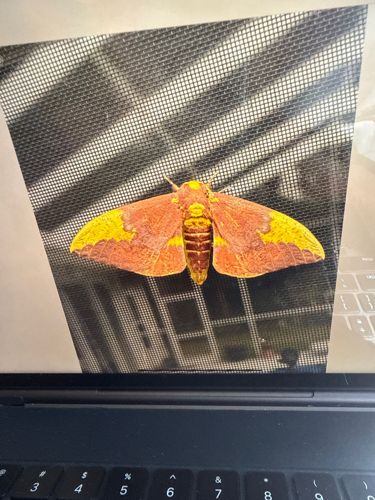Royal Walnut Moth
Scientific Name: Citheronia regalis
Order & Family: Lepidoptera, Saturniidae
Size: Wingspan typically 3.5 to 6.1 inches (9-15.5 cm).

Natural Habitat
Deciduous forests and woodlands, often near host trees like walnut, hickory, and sumac, throughout the eastern United States.
Diet & Feeding
Adult moths do not feed, having vestigial mouthparts. Larvae (hickory horned devils) feed on the leaves of various trees, including walnut (Juglans), hickory (Carya), pecan (Carya illinoinensis), sweetgum (Liquidambar styraciflua), persimmon (Diospyros virginiana), and sumac (Rhus).
Behavior Patterns
Adults are nocturnal and typically live for only about a week, focusing solely on reproduction. Females lay eggs on host plant leaves. Larvae, known as hickory horned devils, are large and brightly colored, undergoing several instars before pupating underground. They spend about two years as a pupa before emerging as adults.
Risks & Benefits
The larvae, despite their intimidating appearance, are harmless to humans. The moths are beneficial as a minor pollinator (though not their primary ecological role) and serve as a food source for other animals. They are an indicator of forest health.
Identified on: 9/15/2025